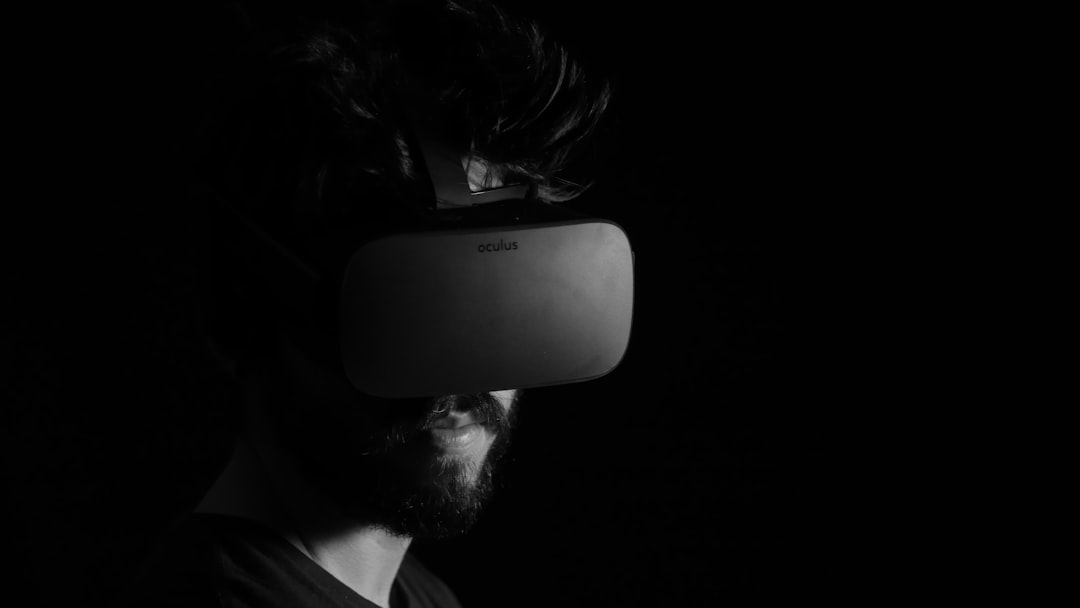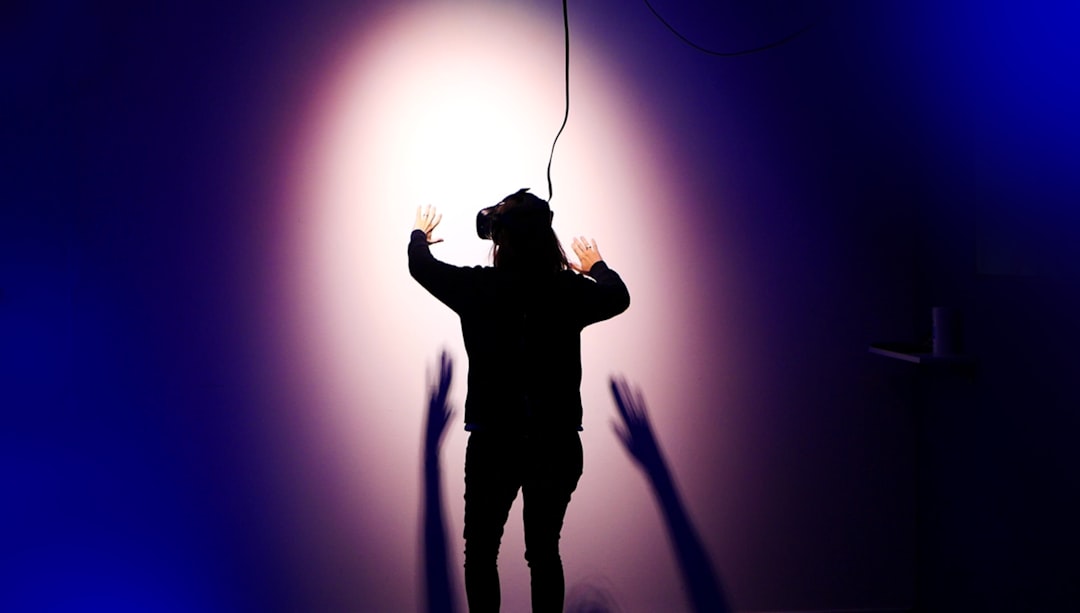Virtual reality (VR) has taken the world by storm and has become the buzzword in the tech industry. This technology has moved beyond just gaming and entertainment and is now being used for more practical and business-oriented tasks. Nowadays, startups are also embracing the power of virtual reality to improve their productivity, efficiency, and customer experience.
In this blog post, we will explore how virtual reality can revolutionize the way startups approach product development, customer engagement, employee training, networking and collaboration, and fundraising.
The virtual reality experience is immersive, engaging, and interactive, which makes it ideal for startups to leverage it to gain a competitive edge in their respective industries. It provides a platform for them to showcase their products and services like never before, which can lead to a significant increase in customer engagement and ultimately, sales.
Moreover, virtual reality can transform the way startups approach employee training by providing them with realistic simulations and scenarios, enabling them to learn quickly and effectively. Virtual reality can also be leveraged for virtual networking and collaboration, which can significantly reduce costs and increase efficiency.
The VR industry is rapidly growing, and startups can also benefit from the various fundraising opportunities it offers. Therefore, it is crucial for startups to embrace the power of virtual reality and integrate it into their business strategies.
In the following sections, we will delve deeper into the ways startups can leverage virtual reality to improve their product development, customer engagement, employee training, networking and collaboration, and fundraising efforts. Join us on this journey to explore how virtual reality can benefit startups and revolutionize the way businesses operate.
VR for Product Development: From Concept to Reality
Virtual reality (VR) technology has entirely altered the way businesses create and design products. To deliver innovative solutions to consumers, using VR technology brings an element of creativity that could not previously be achieved through traditional methodologies.
Today, VR enables startups to create virtual prototypes that facilitate the testing of new products in real-life situations without incurring the costs of physical items. This way, companies can review the product’s specifications, functionality, and overall performance even before the physical production process starts, reducing the cost of product development significantly.
Moreover, VR technology provides a unique perspective that allows each team member to perceive the product from an entirely different angle. This data can be used to design new and improved products for future upscaling opportunities.
In a rapidly moving startup world, businesses need to move fast and stay ahead of their competitors. With VR technology, product development becomes faster, more efficient, and cost-effective. The technology also allows businesses to test products under various conditions, from different angles, and in different environments, resulting in a better final product that meets the market demands.
In addition, VR technology has the ability to aid in user research by enabling startups to simulate the user experience, gain valuable feedback while providing an immersive visual insight that taps into the customer’s senses. In turn, this helps create products that satisfy customer needs, needs that would otherwise be much harder to understand through the traditional research processes.
In conclusion, VR technology has revolutionized product development in many ways, driving innovation, creativity, and design. Startups should embrace this revolutionary technology to build products efficiently, cost-effectively, and create disruptive solutions.
Providing an Immersive Customer Experience
Virtual reality isn’t just transforming product development, it’s also changing the way customers interact with brands. By providing an immersive customer experience, businesses can better engage their audience and create a lasting impression.
With virtual reality, users can experience a product or service as if it’s right in front of them. They can interact with it, navigate through it, and explore it in a way that’s not possible with traditional media. This level of interactivity can increase customer satisfaction, drive brand awareness, and ultimately lead to increased sales.
The use of virtual reality for customer experience is not limited to the retail industry. Any business can benefit from providing their customers with an immersive experience. For example, a real estate agent can create a virtual tour of a property, allowing potential buyers to explore every room and get a feel for the space before even setting foot inside. Similarly, an event planning company can create a virtual tour of a venue, letting clients get a sense of the space and layout before making a booking decision.
Virtual reality can also be used to create unique and memorable marketing experiences. For example, a travel company could create a VR experience that simulates a destination, allowing potential customers to immerse themselves in the culture and surroundings. This can increase brand awareness, create a lasting impression, and ultimately drive sales.
Overall, virtual reality provides businesses with a powerful tool to provide an immersive customer experience that can drive engagement and boost sales. By embracing this technology, startups can stand out in a crowded market and create a competitive advantage.
Similarly, an event planning company can create a virtual tour of a venue, letting clients get a sense of the space and layout before making a booking decision.
Training Simulations for Improved Employee Efficiency
Virtual reality has proven to be a valuable tool for training employees across a range of industries. In the context of startups, VR can help to improve employee efficiency in several ways. Firstly, it can be used to train employees in a more engaging and interactive manner that mimics real-world scenarios. This can help to prepare employees for potential challenges and minimize the learning curve associated with new roles.
Virtual reality training simulations also provide a space for employees to practice skills and receive feedback in a safe and controlled environment. For example, sales representatives could practice their pitch on a virtual customer, receiving feedback from their trainer in real-time. This provides an opportunity for employees to improve their skills before engaging with real customers, leading to improved customer satisfaction and ultimately, sales.
Additionally, VR can be used to train employees on safety procedures in a fun and engaging way. Startups in industries such as construction or manufacturing can use VR to simulate hazardous scenarios and train employees on safety procedures without risking actual harm. This type of training can be particularly helpful in reducing workplace accidents and injuries.
Overall, virtual reality training simulations can help startups to improve employee efficiency, reduce the learning curve associated with new roles, and enhance safety training. With the growing adoption of VR technology, startups that embrace it for employee training are sure to have a competitive advantage.
Scaling Your Business Through Virtual Networking and Collaboration
In today’s fast-paced business environment, entrepreneurs are constantly seeking innovative ways to expand their reach and grow their operations. Virtual reality (VR) technology has emerged as a powerful tool for businesses looking to scale and collaborate remotely.
By leveraging VR, startups can break down the barriers of physical distance and bring team members, partners, and clients together in a virtual environment. This can greatly enhance collaboration, facilitate communication, and streamline decision-making processes.
One of the biggest advantages of using VR for networking and collaboration is the ability to create lifelike, interactive environments. With VR, businesses can recreate physical office spaces, meeting rooms, and even entire conference venues in a virtual setting. This can allow team members from different locations to meet and work together as if they were in the same room.
Moreover, VR technology also enables real-time communication among team members, regardless of their location. Whether it’s instant messaging, voice chat, or video conferencing, startups can maintain a seamless flow of communication and work together more efficiently.
In addition, VR technology can also be used to create virtual showcases and demonstrations of products or services. This can be especially helpful for businesses that offer physical products that are difficult to transport or demonstrate in person. By creating a virtual showcase of their products, startups can reach a wider audience and showcase their products in a more engaging and interactive way.
Overall, VR technology has tremendous potential for startups looking to scale their business and collaborate remotely. With its ability to recreate lifelike environments and enable real-time communication, VR can help businesses break down geographical barriers and connect with team members and clients in a more immersive way.
With VR, businesses can recreate physical office spaces, meeting rooms, and even entire conference venues in a virtual setting.
Fundraising Opportunities in the VR Industry
As the virtual reality industry continues to grow, so does its potential for investment and fundraising opportunities. In fact, VR is one of the most exciting and lucrative industries for startups and emerging businesses seeking funding. With VR hardware and software projected to be a $70 billion industry by 2024, investors are eager to get in on the ground floor of this revolutionary technology.
One of the most common forms of fundraising in the VR industry is through venture capital firms. These firms specialize in financing startups and emerging businesses, providing them with the necessary capital to develop and launch their products. As the VR industry continues to experience rapid growth, venture capital firms are actively seeking out new investment opportunities.
Crowdfunding is another popular fundraising avenue for VR startups. Crowdfunding platforms like Kickstarter and Indiegogo allow entrepreneurs to showcase their products and services to a vast online community. With the potential to reach millions of potential investors, crowdfunding has become an increasingly popular and effective way for VR startups to raise funds.
There are also specialized VR accelerators and incubators that provide funding, mentorship, and resources to early-stage VR startups. These programs can be an excellent opportunity for entrepreneurs to gain access to the expertise, industry connections, and funding they need to succeed.
Furthermore, partnerships with established companies in the VR space can also lead to significant fundraising opportunities for startups. Collaborations with hardware companies like Oculus and HTC Vive or software developers like Unity and Unreal Engine can provide VR startups with the resources and funding they need to take their products to the next level.
In conclusion, the potential for fundraising opportunities in the VR industry is vast and varied. As the industry continues to grow and evolve, entrepreneurs and startups have the opportunity to capitalize on the ever-increasing interest and investment in this revolutionary technology. With the right approach and strategy, VR startups can secure the funding they need to bring their innovative ideas and products to market, contributing to the overall growth and success of this exciting industry.
Conclusion: The Future of Startups Lies in the VR Revolution
In conclusion, virtual reality technology offers immense potential for startups of all industries. From product development to customer experience, employee training to networking, the possibilities are endless. As we move towards a more digital and remote world, VR can provide a level of virtual connectivity and engagement that was previously unattainable.
As the technology continues to develop and become more accessible, startups that embrace VR will have a clear competitive advantage. By incorporating VR into their operations, startups can better understand their customers’ needs, develop products faster and more efficiently, and train employees in a safe and controlled environment.
Moreover, as businesses continue to shift to remote work and virtual collaboration, VR can provide a space for teams to connect and work together, regardless of location. Startups that leverage this technology can build stronger partnerships and more lasting relationships with vendors, suppliers, and customers alike.
Lastly, the fundraising opportunities in the VR industry are significant. With traditional fundraising methods becoming increasingly challenging, VR offers a new and exciting way for startups to raise capital through crowdfunding, virtual pitch events and more.
In conclusion, the future of startups lies in embracing the VR revolution. By investing in this technology and staying ahead of the curve, startups can accelerate their growth, expand their customer base, and ultimately, achieve long-term success.





